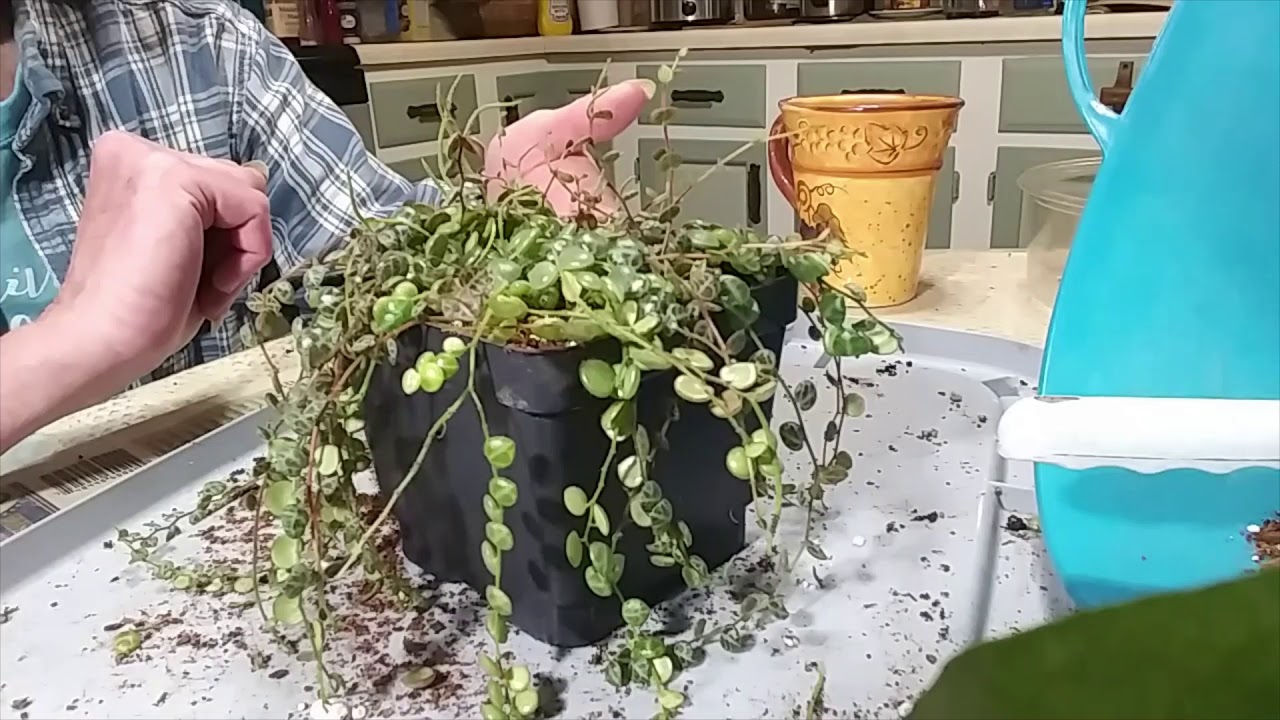To repot a String of Turtles plant, carefully remove it from its current container and transfer it to a larger pot with fresh, well-draining soil. Here is a detailed guide on how to repot a String of Turtles plant.
The String of Turtles (Peperomia prostrata), also known as the String of Turtles Plant or Turtle Vine, is a popular succulent with unique trailing foliage that resembles the shell of a turtle. Repotting is an essential step in the care of String of Turtles plants, as it allows for proper root growth and prevents the plant from becoming root-bound.
We will discuss the steps for repotting a String of Turtles plant to ensure its continued health and vitality. From preparing the new pot and soil to transferring the plant and providing the necessary aftercare, we’ve got you covered. These simple instructions will help you successfully repot your String of Turtles plant and keep it thriving. So, let’s dive in and learn how to repot String of Turtles.

Credit: www.reddit.com
How to Repot String of Turtles: Step by Step Guide
Choosing The Right Pot For Your String Of Turtles
Choosing the right pot for your string of turtles is crucial for successful repotting. There are various pot options available to consider. One factor to keep in mind is the size of the pot. Ensure it allows ample space for the roots to spread and grow.
Another factor is the material of the pot. Clay pots are preferred as they provide better drainage. Additionally, consider the aesthetics of the pot, choosing one that complements the appearance of your string of turtles. Moreover, make sure the pot has sufficient drainage holes to prevent waterlogging.
It’s also important to select a pot that is sturdy and durable to withstand the weight of the plant. Considering these factors will help you make the right choice when repotting your string of turtles.
Preparing Your String Of Turtles For Repotting
To prepare your string of turtles for repotting, start by identifying the signs that it needs repotting. Look for roots coming out of the drainage holes or circling the pot, a decrease in growth, or the plant becoming top-heavy. Once you’ve determined that it’s time to repot, follow these steps to prepare the plant.
First, water the plant a day or two before repotting to ensure it’s hydrated. Next, gently remove the plant from its current pot, taking care not to damage the roots. Gently loosen the root ball and inspect the roots for any signs of damage or disease.
Finally, prepare a new pot with fresh, well-draining soil and place the plant in the center, making sure the roots are spread out and covered with soil.
Repotting Your String Of Turtles Step-By-Step
Repotting a string of turtles requires a step-by-step approach. First, focus on creating the ideal potting mix for the plant. Next, employ the proper method of repotting the plant to prevent root damage. Begin by gently loosening the plant from its current container.
Carefully remove any excess soil from the roots. Select a new pot that is slightly larger than the current one. Fill it with a well-draining soil mixture. Place the plant in the new pot, ensuring the roots are spread out evenly.
Fill the remaining space with the potting mix, gently pressing it down. Water the plant thoroughly, allowing the soil to drain properly. Follow these guidelines to successfully repot your string of turtles and promote healthy growth.
Caring For Your Newly Repotted String Of Turtles
Caring for your newly repotted string of turtles involves meeting their watering and fertilizing requirements. Proper watering is essential, ensuring the soil is evenly moist but not waterlogged. Aim to water the plant when the top inch of soil feels dry to the touch.
Fertilizing can be done every four to six weeks during the growing season using a balanced liquid fertilizer. After repotting, it’s crucial to adjust the lighting and temperature conditions for your string of turtles. They prefer bright, indirect sunlight and temperatures between 60-85°F (15-29°C).
Consider placing them near a window with filtered light or using a grow light to supplement their light needs. To maintain a healthy plant, prune and groom your string of turtles regularly. Remove any yellow or withered leaves and trim back leggy stems to encourage bushiness.
Troubleshooting Common Issues After Repotting
Transplant shock is common after repotting string of turtles, but it can be managed. Signs of root damage include yellowing leaves or stunted growth. To address this, gently remove the plant from its pot, trim damaged roots, and repot it in fresh soil.
Another issue to tackle is pests and diseases. Inspect the plant for signs of infestation, such as webbing or discoloration. Treat with insecticidal soap or neem oil if necessary. Additionally, moisture control is vital. Avoid overwatering and ensure the pot has proper drainage.
Finally, provide the plant with adequate light and maintain a consistent indoor temperature. By troubleshooting these common issues after repotting, you can help your string of turtles thrive in its new home.
Final Thoughts On Repotting String Of Turtles
Repotting your string of turtles plant regularly is essential for its overall health. Neglecting this crucial task can lead to rootbound conditions, hindering its growth. By repotting, you provide the plant with fresh soil and space for its roots to spread, ensuring optimal nutrient absorption.
This process also allows you to check for any signs of pests or diseases and address them promptly. To repot your string of turtles plant, gently remove it from its current container and untangle any tangled roots. Place it in a slightly larger pot with well-draining soil, ensuring that the crown of the plant sits at the same level as before.
After repotting, water the plant thoroughly, but avoid overwatering. With regular repotting, you’ll not only promote the health and vitality of your string of turtles but also enjoy its beauty for years to come.
Frequently Asked Questions For How To Repot String Of Turtles
How Often Should I Repot My String Of Turtles Plant?
It is recommended to repot your String of Turtles plant every 1 to 2 years. Repotting allows for fresh soil and more space for root growth, promoting plant health and preventing overcrowding.
What Kind Of Soil Should I Use To Repot My String Of Turtles?
For repotting your String of Turtles, use a well-draining soil mix that consists of equal parts of potting soil, perlite, and sand. This will provide the optimal balance of moisture retention and drainage for your plant.
Can I Use A Bigger Pot When Repotting My String Of Turtles?
Yes, you can use a slightly larger pot when repotting your String of Turtles. Just ensure that the new pot has drainage holes and is only one size up from the current pot. Using a pot that is too big may lead to overwatering and root rot.
How Do I Safely Repot My String Of Turtles Without Damaging The Roots?
To safely repot your String of Turtles, gently remove the plant from its current pot, being mindful of the delicate roots. Gently loosen the root ball, remove any dead or damaged roots, and place it in the new pot. Fill around the roots with fresh soil, press down lightly, and water thoroughly.
Conclusion
To conclude, repotting your String of Turtles plants is an essential task that ensures their healthy growth and longevity. By following the step-by-step process discussed in this blog post, you can successfully repot your plants without any hassle. Remember to choose a suitable pot and well-draining soil mix to promote proper drainage and prevent waterlogged roots.
Taking care to handle the delicate vines and roots gently will avoid any unnecessary damage during repotting. Additionally, providing the necessary care, such as adequate sunlight, regular watering, and occasional fertilization, will help your String of Turtles thrive in their new pot.
Pay attention to any signs of overwatering or under-watering, and make the necessary adjustments to ensure your plants’ well-being. With these tips and guidelines, you can enjoy the stunning beauty of your flourishing String of Turtles plants in any space of your home or office.

